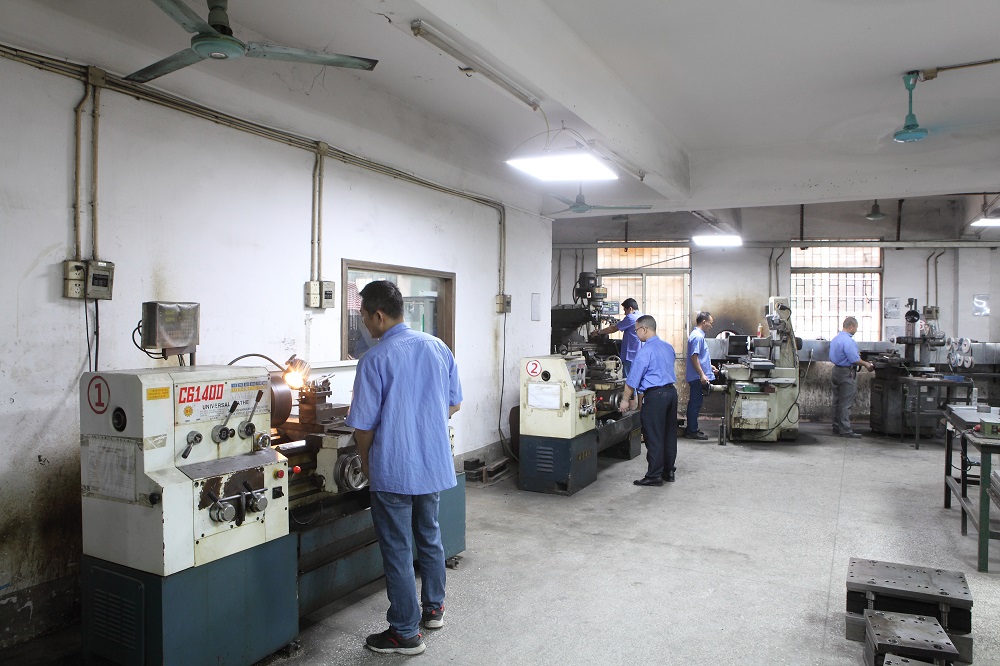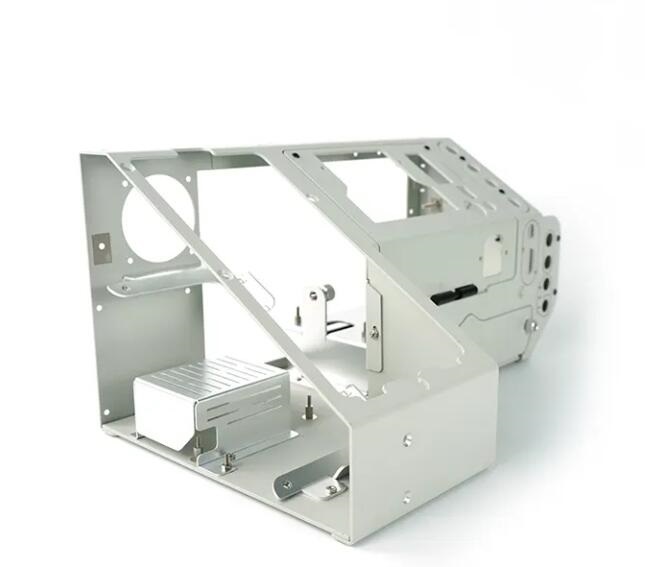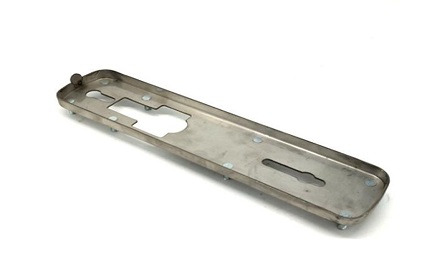Welcome to Chengli Hardware, a leading name in the manufacturing and trading industry with a specialized focus on precision metal stamping and sheet metal fabrication.
Our primary services include medical stampings, medical metal stamping, and medical device stamping, utilizing precision metal stamping for medical devices. We’re equipped with in-house tooling facilities, which enhance our production processes and empower us to meet the custom manufacturing needs of our diverse clientele.
At Chengli Hardware, we recognize the essential role of metal forming, specifically medical stampings in the healthcare and medical industries. Our comprehensive range of services is designed to support the stringent and complex demands of these sectors.
Through this blog, we hope to provide insights into the relevance and significance of metal stamping in the healthcare and medical industries and how Chengli Hardware has built its reputation as a trusted name in this field.

The Significance of Metal Stamping in Healthcare and Medical Industries
When it comes to the medical field, the significance of medical stampings can’t be overstated. Medical metal stamping and medical device stamping provide the backbone for a variety of equipment and devices that healthcare professionals rely on daily. These procedures prioritize safety regulations not only for the staff but also for the patients.
As a result, the process of metal stamping, especially for medical applications, must adhere to rigorous safety standards to prevent risks of cross-contamination or harm to the users.
The healthcare sector has specific and rigorous demands for precision metal stamping for medical devices. The delicate nature of healthcare and medical work, along with the vital role these devices play, requires the highest degree of precision.
Whether it’s stainless steel used in surgical tools, or copper in medical device components, the quality of the materials and precision in their formation is key. This level of quality control ensures the products perform reliably and consistently in all healthcare scenarios.
Crucial Factors for Healthcare-related Metal Stamping
A. Using Prototypes for Effective Planning and Innovation
For effective planning and innovation, prototypes play a vital role in the process of medical stampings. These models allow for rigorous testing and modification before mass production, ensuring the final product is up to standard.
B. Minimizing Secondary Procedures
Minimizing secondary procedures in the manufacturing process is another crucial factor. Efficient production techniques, such as progressive die stamping and deep draw stamping, can form complex parts in one go, eliminating the need for subsequent operations. This approach not only saves time but also reduces the cost, providing a budget-friendly solution to our clients.
C. Commitment to Engineering Solutions

At Chengli Hardware, we commit to delivering high-quality engineering solutions. Our team of seasoned professionals leverages advanced techniques for precision metal stamping for medical devices, ensuring top-notch results that align with our clients’ expectations.
D. Compliance with Quality Assurance Norms
Compliance with quality assurance norms is non-negotiable in the healthcare sector. With stringent quality checks at each production phase, we ensure that our products meet and exceed these norms. Our compliance reduces risks and improves the reliability of the products, enhancing patient safety and care.
Equipments Used for Healthcare Metal Stamping
A. Small-scale Production Tools
In the initial stages of medical stampings, small-scale production tools come into play. These tools, vital for the creation of prototypes, are instrumental in testing, modifying, and perfecting the design before scaling up to mass production.
B. Large-scale Manufacturing Equipment
For mass production of medical devices, large-scale manufacturing equipment is essential. These machines enable medical metal stamping and medical device stamping to occur at high volumes with impeccable precision.
C. Use of Progressive Dies for Mass Production
One key machinery component in the process is the progressive die used for mass production. The progressive die stamping process is instrumental in manufacturing complex parts in high volumes. With this technique, we can produce components at a faster rate without compromising the quality, ensuring efficiency and cost-effectiveness.
D. In-house Tooling Resources at Chengli
At Chengli Hardware, we believe in maintaining our production standards at all times. That’s why we have in-house tooling resources to cater to specific manufacturing needs. These resources allow us to control the quality, timeline, and costs associated with the process, offering our clients an edge in their respective markets.
Materials for Medical Metal Stamping
In the realm of medical stampings, the choice of materials is critical. Not all metals are created equal – their varying properties dictate their suitability for different applications
A. Stainless Steel

One of the most preferred materials for medical metal stamping is stainless steel. Its robustness, rust-resistance, and biocompatibility make it ideal for a wide range of medical devices. From surgical instruments to implants, stainless steel is a reliable and trusted material in the medical field.
B. Aluminum
Aluminum, known for its durability and anti-corrosive properties, is another frequently utilized material. Lightweight yet strong, it is used in various applications, including casings for medical devices and components of mobility aids. Its resistance to corrosion further extends the lifespan of the medical device stamping products, providing long-term value.
It’s worth noting that the choice of materials extends beyond these two options and is dependent on the specific requirements of the device. Other materials like bronze, brass, and copper also find their place in healthcare metal forming, each bringing unique
Metal Stamping Components for Medical Industry
The realm of medical stampings is diverse, spanning across numerous applications. These precision-formed components are essential elements in many devices, facilitating accurate diagnoses, effective treatments, and improved patient care.
A. Casings for Thermometer Probes
Thermometer probes are essential tools in healthcare, providing accurate temperature readings crucial for diagnoses. Durable casings, formed through medical metal stamping, protect these sensitive devices and ensure their longevity.
B. Casings for Medical Devices
Casings for various medical devices, including heart monitors and infusion pumps, are often produced through medical device stamping. These encasements protect the device’s inner workings, ensuring they can deliver their functions effectively while withstanding the rigors of everyday use.
C. Components for Oxygen Cylinders
Oxygen cylinders are integral to patient care in various settings, from hospitals to homes. The precise components required for these life-saving devices, including the valves and pressure regulators, are often produced through precision metal stamping for medical devices.
D. Parts for Pumps

Pumps, whether for infusions, insulin, or other medical needs, demand high-precision components to operate effectively and safely. Medical stampings enable the creation of these intricate parts, ensuring optimal pump functionality.
E. Tools for Surgery
Surgical tools, such as scalpels, forceps, and clamps, are often formed from high-grade metals like stainless steel. Medical metal stamping ensures these tools are durable, reliable, and capable of withstanding sterilization processes.
F. Injecting Devices
Components for injecting devices, like insulin pens and auto-injectors, also come under the umbrella of medical stampings. These devices require precision-formed parts to ensure they can deliver medication accurately and effectively.
Conclusion
The field of medical stampings is indeed vast, covering a wide array of applications. The healthcare industry’s constant advancements necessitate increasingly innovative and precision-engineered components, a demand that medical metal stamping and medical device stamping meet effectively.
At Chengli Hardware, we’re committed to maintaining our cutting-edge skills and technology to serve this vital industry. As we continue to navigate the future of healthcare, we stand ready to provide our clients with the highest-quality, custom-tailored manufacturing solutions.
We hope this article has shed light on the invaluable role of metal stamping in the medical and healthcare industries. For further information on our services or to discuss your specific project requirements, please do not hesitate to contact us.
FAQ
1. What is the difference between stamping and punching?
Stamping involves forming the metal into a specific shape or design, often with the use of a die or mold. Punching is a process where a hole is created in the metal piece using a punch press.
2. What are the four types of metal stamping?
The four main types of metal stamping are blanking, embossing, bending, and coining.
Blanking is a process where a metal workpiece is removed from the primary metal sheet or strip.
Embossing is when the metal is stamped with a particular design or pattern.
Bending involves altering the shape of the metal.
Coining is a technique where the metal workpiece is precisely shaped to fit into a specific mold.
3. What is the difference between stamping and forming?
Stamping is a subset of forming. While forming refers to any process that changes the shape of metal workpieces, stamping specifically uses dies to cut or shape the material.
